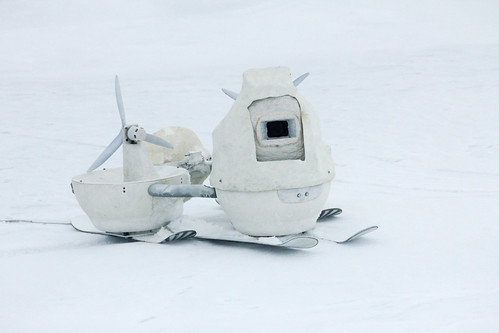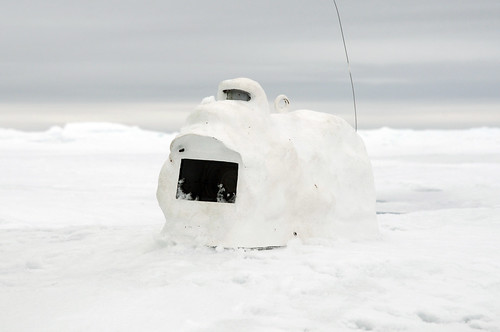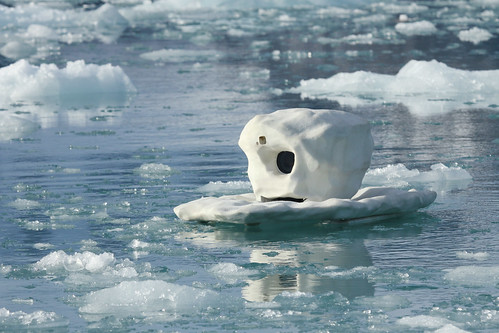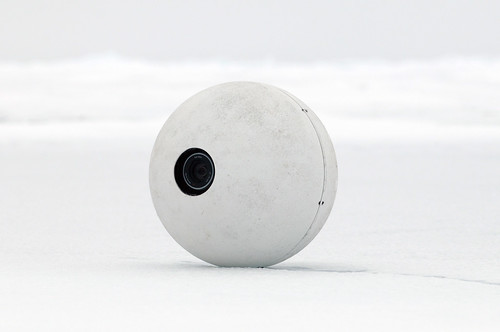Polar Bear – Spy on the Ice
Iceberg-cam, blizzard-cam and snowball-cam are a new generation of spycams on a mission to explore the icy Arctic islands of Svalbard in Norway. Backed up by snow-cam and drift-cam, these technologically advanced spycams contain sophisticated electronics to endure polar arctic conditions.
From the outset, the wildlife filmmakers are faced withsome of nature’s greatest challenges. But one spycam is just a breath away as cubs emerge from winter maternity dens.
Next the spycams team up and prepare to follow in the footsteps of polar bear mothers and cubs as they face their first summer in a world of shrinking ice. Each mother has a single goal, to guide her cubs to the rich hunting grounds of the sea ice. But on the way they must run the gauntlet of roaming males.
One mother and her cubs make it, and iceberg-cam tracks them across shifting ice as they head north towards the sturdier pack ice. But not all bears are so lucky – a mother and cub are marooned on the island, and it’s here that spycams reveal the true depth of polar bears’ intelligence.
The land offers slim pickings and spycams discover how land-locked bears unearth new opportunities hunting walrus, diving for kelp, eating grass and even raiding bird colonies – filmed for the first time. Elsewhere on the island a washed-up whale carcass offers a bear banquet; and iceberg-cam captures the bears’ little-known social nature as they share this rare bounty.
Back on the sea ice, iceberg-cam makes another discovery – the polar bears’ astonishing intelligence as they hunt seals. While life is relatively good on the ice it has its dangers. The mother and her cubs reach the end of the drift ice and are faced with a marathon swim. Will they make it to the security of the pack ice?
With spycams at their side, Polar Bear Spy on the Ice follows the bears’ fate during a difficult ice-free summer. Ultimately, spycams reveal that polar bears’ intelligence and curiosity are key to their survival in a world of shrinking ice.
Polar Bear Flirts with Mate
Polar Bear Hunts Bearded Seal
The cameras
Blizzard Cam

Designed to operate in extreme arctic environments ranging from the perilous sea ice, frozen glacial fjords and treacherous snow covered mountains. Speed and stealth was achieved by its two powerful electric motors that quietly propel it on skis to 40 mph. Blizzard cam’s robust camera turret was designed to resist temperatures below minus 30 degrees C. The onboard high definition camera was remotely operated over a distance of 1 km. The very real threat of attack from polar bears was thwarted by an onboard decoy device ‘Snowball cam’. This could be deployed remotely from Blizzard cam for front line camera operations, allowing the more vulnerable Blizzard cam to retreat from dangerous situations.
Drift Cam

Drift cams were specifically designed to film autonomously without the need for a camera crew. Driftcams are triggered by detecting infrared heat, their sensitivity could detect a polar bear from a distance of 50 metres. Once deployed they can remain in standby for up to a week, even at minus 30. This proved crucial for filming mother and cubs emerging from their maternity dens. Each Driftcam was fitted with a solar powered satellite phone that alerted the crew every time it was triggered. Drift cams made it possible to capture the emergence even when the crew was snowed in by severe blizzards.
Iceberg Cam

For the bears on the sea ice a very different spycam was needed. Iceberg cam was designed to blend seamlessly amongst the ice flows. Its powerful thrusters produced enough speed to keep up with swimming bears. Iceberg cam was decked out with 2 cameras for above and below water filming. This remarkable spycam captured revelatory footage of hunting and scavenging polar bears in breathtaking detail never before seen.
Snowball Cam

The polar bears investigative and often destructive nature required a device that was polar bear proof. Snowball cam was the solution. Its large spherical shape prevented bears from getting a firm bite or hold. Its tough reinforced shell protected it from most polar bear encounters making it perfect for front line filming. Snowball cam has no visible moving parts but was able to roll across most terrains, even up hill. It could also film on the roll thanks to a self-leveling high definition camera. Having the ability to dock and undock from Blizzard cam was essential for safe and effective deployment into the thick of the action.
Snow Cam
Snow cam was specifically designed for hard packed snow and ice. But its slow speed made it vulnerable to attack from bears. It soon became an easy target and was completely flattened by a boisterous bear on the first shoot. Blizzard cam became its new and improved successor.



















